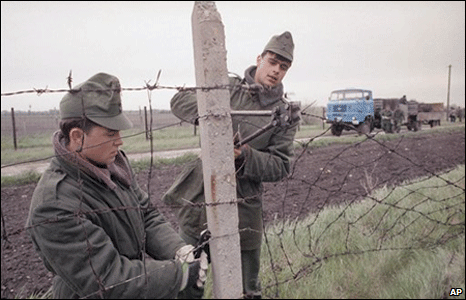2009 is the 20th anniversary of the beginning of the end of Communist rule in a lot of the eastern satellite countries. On May the 2nd 1989, Hungarain Border Guards started removing the fences defining their borders with Austria. The Hungarian government assured the East German government that they would not provide a gate way for a flood of East German's to escape into Austria. It was a promise they were unable to keep. Hungaries Lake Balaton had long been a popular summer holiday destination and following the removal of the fences in May many East Germans entered Hungary, ostensibly on holiday, and went immediately to Austria. This caused a major problem for the Austrians trying to house this flood of what became refugees. Here is a BBC picture showing Hungarian soldiers cutting the fencing between Hungary and Austria.
Regards,
Gordon
Attached image(s)
Regards,
Gordon
Attached image(s)




Comment